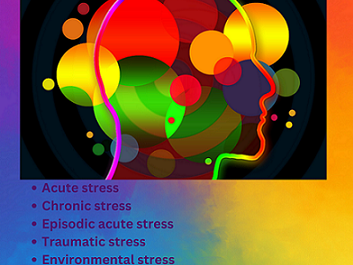What are Mental Processes?
Mental processes are the human mind’s functions, including how people perceive and react to their environment. The mental process concept covers all mental skills a person uses on a daily basis. The definitions of mental and psychological processes also frequently group these skills into identifiable categories, varying in number depending on the psychologist or researcher.
Mental processes, also known as psychological processes, are the mechanisms by which people process stimuli, respond to them, and act. These processes depend on the following elements,
- The capacity to perceive both visible and invisible environmental information,
- The capacity to generate meaning from the analysis of information,
- The capacity to develop solutions for problem-solving
But what exactly is a mental process, and why is it crucial to comprehend the different kinds? Understanding mental processes enable one to comprehend how people think, feel, and communicate. Psychologists can begin to comprehend the significance of each mental process in people’s daily lives by learning how one can react to a scenario depending on the emotional connection or earlier experience.
Types of Mental Processes in Psychology
In psychology, there are various types of well-characterized mental processes. Each type contributes differently to processing, and how it does so influences how well someone understands their environment. For instance, even if two people were conversing in a polite and professional manner, one could nevertheless feel that the discussion was unpleasant. These types broadly fall into one of the following eight categories:
- Sensation
- Perception
- Attention
- Learning
- Memory
- Language
- Motivation
- Emotion
Sensation
Sensation has to do with how well the body can pick up on stimuli. An individual can feel the warmth of the fire on their skin while sitting close to a campfire. Transduction is needed for sensation. Between nerve cells, electrical signals are used to transmit messages in the body. This means that the body must convert external sensations like touch, sound, and heat into an electrical signal that the nervous system can transmit. In response to external inputs, sensory organs can convert them into electric signals.
Vision, hearing, taste, touch, and smell are the five senses that are most often described. Although humans rely heavily on these senses, they are far from the only ones involved in everyday life. Humans are also able to feel pain, balance, and temperature.
Perception
One’s interpretation of a sensation is described as “perception.” The body’s reaction to pain serves as a clear illustration of this. Sensory systems called nociceptors look for stimuli that can cause tissue injury. For instance, while thermoreceptors are capable of detecting “warm” stimulations, nociceptors take control once the temperature rises to a level that can cause cell damage. Nociceptors are, therefore “sensing” damaging stimulations rather than pain. A person’s perception of these harmful stimulations is pain. Even though a knife cut will activate nociceptors in both people, how painful it feels to each person will vary greatly. While one person might consider the stimulation to be excruciating, another might consider it to be only somewhat uncomfortable. They each felt the sensation, but they each interpreted it differently.
Attention
Attention is a state of mind that focuses on a single thing or thought, especially one that has been chosen ahead of others from a complex, with the goal of limiting or clarifying receptivity by reducing the variety of stimuli.
The body is constantly exposed to external stimulation. When one enters a busy cafeteria, they are exposed to myriad sights and sounds as people move about and chat with one another. They may smell multiple lunch options and sit for a meal of many different flavors. It would be entirely overwhelming for the brain to pay attention to every stimulation simultaneously. Because of this, attention allows one to focus on only those that seem important.
Learning
Learning is a behavior change that happens through experience and lasts for a while. It involves learning new skills, knowledge, and information. It’s easy to focus on formal education during childhood and early adulthood when thinking about learning. However, education is a never-ending process that takes place throughout one’s life and transcends the classroom.
Memory
The mental processes of acquiring, storing, retaining, and later retrieving information are referred to as memory. Memory is involved in three major processes: storage, retrieval, and encoding.
The capacity for both information preservation and retrieval is a component of human memory. Nonetheless, this is certainly not a perfect cycle. People occasionally misremember or forget things. Sometimes, the information is not properly stored in memory at all.
Language
Language is not only a uniquely human phenomenon but also a central regulator of all mental processes. Language not only serves as a means of communication and the foundation for verbal, discursive thinking, but it is also an important tool for controlling how people act. Language acts as a mediator between various practical actions. For instance, the grammatical class of a word has different effects on motor control and visual analysis. Additionally, language/discourse makes new types of consideration, memory, creativity, thinking, and activity possible. To put it another way, the language system is a powerful factor that shapes mental activity. It has been demonstrated that inner speech is involved in critical behavioral processes like verbal self-guidance and self-regulation, problem-solving, planning, and memory.
Motivation
The urge to act in support of a goal is what motivates people. It is essential to establishing and achieving our goals.
One of the factors influencing human behavior is motivation. It encourages rivalry and fosters interpersonal relationships. Depression and other mental diseases might result from its absence. The desire to keep making progress toward a life with meaning, purpose and worth living is a component of motivation.
Emotion
Humans’ reactions to events or circumstances, or their emotions, are known as emotions. The situation that causes an emotion determines the kind of emotion that an individual will feel. For instance, when someone hears excellent news, they are happy. When someone is in danger, they become afraid.
Our daily lives are significantly impacted by our emotions. Depending on our emotions—happiness, rage, sadness, boredom, or frustration—we make choices. We pick interests and pastimes based on the feelings they arouse. Knowing our emotions can make life easier and more stable for us to manage.




